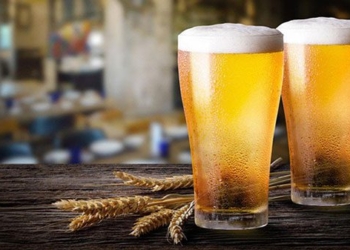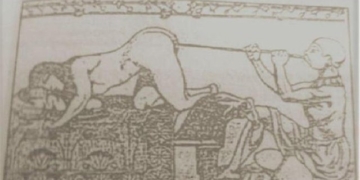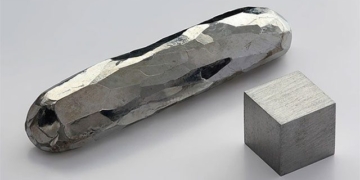The effort to clarify that “Hang Dau Post” is not the same as “Hang Dau Water Tower” seems to have come too late. The public has spent many years misreading the name and has accepted this confusion.
Hanoians have become accustomed to using the term “post” to refer to the old water tower built by the French on Hang Dau Street. This nomenclature persists despite the sign clearly stating “Hang Dau Water Tower – Château d’Eau Hang Dau.”
When the site suddenly gained fame due to plans to open for visitors, the terms “Post” and “Water Tower” continued to be used interchangeably by the media, lacking consistency. So what is the correct term?
In an interview, author Nguyen Truong Quy, a researcher on Hanoi, confirmed that Hang Dau Post and Hang Dau Water Tower are two separate structures, serving two different functions.
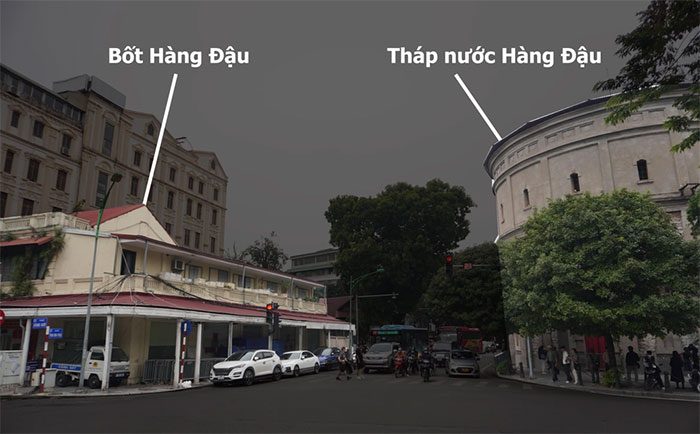
The location of Hang Dau Post (now the headquarters of Dong Xuan Ward Police) and Hang Dau Water Tower. (Photo: Ngoc Tan)
Today, Hang Dau Post serves as the headquarters of Dong Xuan Ward Police, located at the end of Hang Giay Street, opposite the Hang Dau Water Tower.
According to Nguyen Truong Quy, the term “post” originates from the French word “poste,” meaning station or outpost. Poste de garde refers to a guard station, where soldiers or police are stationed.
During the French colonial period, Hang Dau Post along with Hang Trong Post (now the headquarters of Hoan Kiem District Police) were the two largest police stations in Hanoi. On old maps, these locations were labeled as Commissariat de Police (police station).
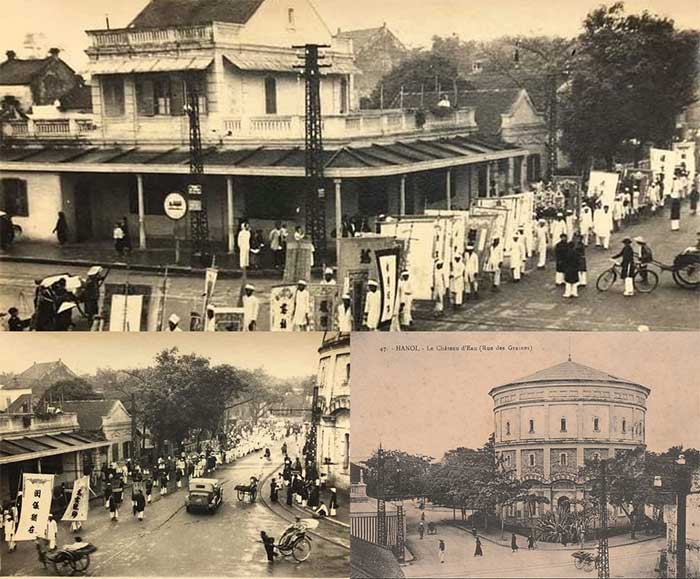
The characteristic porch of the Hang Dau police station appears in many archival photographs.
“People call Hang Dau Post to refer to the police station and then used this name for the water tower next to it. This is also because the shape and architecture easily evoke thoughts of a police post,” Nguyen Truong Quy shared.
The researcher noted that the Hang Dau Water Tower was constructed to provide water for the city. On French maps, it is labeled as “Château d’Eau” (water tower).
When the Yen Phu Water Plant was built in 1894, the French simultaneously constructed two “twin” water towers at Hang Dau and Don Thuy to store water from the plant and distribute it to residential areas via pipelines.
“I have not seen any documentation suggesting that this water tower ever served as a ‘soldier’s post’ or a defensive structure,” Nguyen Truong Quy asserted.
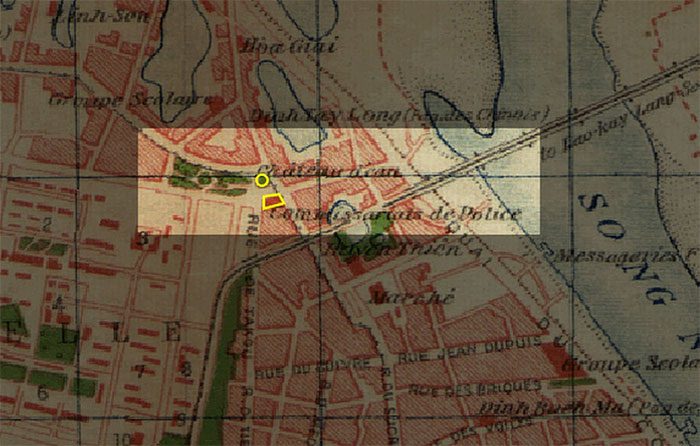
A 1920 map of Hanoi clearly indicates the two locations of the Water Tower (Château d’Eau) and Police Post (Commissariat de Police) on Hang Dau Street.
Expressing his views about the current confusion between the terms “Hang Dau Post” and “Hang Dau Water Tower,” author Nguyen Truong Quy emphasized that “mistakes must be corrected” and hopes that the media will contribute to clarifying the proper names.
“Change is difficult, but generally, colloquial terms only last for a while before they can be gradually adjusted,” the researcher hopes.

Researcher Nguyen Truong Quy. (Photo: NVCC).
|
Old Hang Dau Gate French-era documentation records Hang Dau Street as “Marchands de Haricots” (bean merchants) or Rue de graines (street of seeds). Today, Hang Dau Street is approximately 270m long, serving as the boundary between Hoan Kiem and Ba Dinh districts. The street faces the Red River. From there, along the riverbank, there is a series of streets selling foodstuffs such as Hang Khoai, Cho Gao, Hang Chinh, Hang Muoi… In a research paper titled “Hanoi once had 21 gates”, author Nguyen Truong Quy confirms that Hang Dau Gate is one of them. The gate is also known by other names like O Nghia Dung or O Phuc Lam (referring to the old village of Phuc Lam). Hang Dau Gate leads directly to the Red River, where merchants transported goods from the river port into the market. |
Hanoi opens its doors for the first time to tourists visiting the Hang Dau Water Tower
From November 17 to December 31, 3023, the interior of the Hang Dau Water Tower will be renovated and organized for public display.
This activity is part of the Hanoi Creative Design Festival 2023, organized by the Department of Culture and Sports of the city in collaboration with the Vietnam Association of Architects and other agencies.
The structure, built in 1894, is one of the ancient architectural works of Hanoi constructed by the French to provide clean water to their soldiers and citizens during the French occupation, alongside the establishment of the Yen Phu Water Plant.
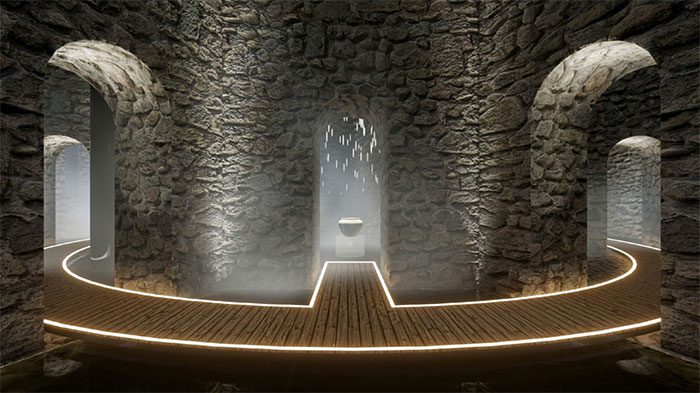
Design perspective inside the Hang Dau Water Tower. (Photo: BTC).
After many years of being “forgotten,” the Hang Dau Water Tower is now being revitalized by architects and experts who are organizing an exhibition of the Water and Heritage Installation Space of the Hang Dau Water Tower.
The exhibition space inside the post includes: an audio installation that recreates the sounds of water in nature; a lighting installation featuring images that highlight the impact of urbanization on the natural environment. Through this, the authors aim to convey to the public the role of water in life as well as the connection between humans and nature. This is also an opportunity for visitors to explore the inner beauty of this architectural work.









































